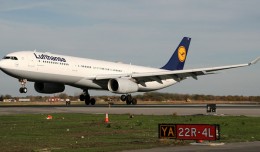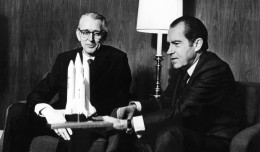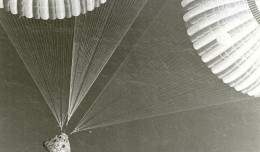2005: Air, naval and ground forces take part in the first ever joint military exercise between Russia and China.
2002: A Russian Air Force Mil Mi-26 helicopter is shot down by a Chechen missile while flying over Grozny, killing 127 of the 140 soldiers onboard. It is the deadliest helicopter incident in history, and one of the deadliest Russian military aviation accidents.
1980: Saudia Flight 163, a Lockheed L-1011-200 TriStar, burns at Riyadh, killing all 301 on board. The plane had actually made a safe emergency landing after the crew received indications of a fire in the cargo compartment, but a delay by the crew in evacuating the plane, combined with the emergency service’s inability to open the doors for a long period of time, caused the passengers and crew to die of burns and smoke inhalation.
1969: Embraer is formed by Brazil’s Ministry of Aeronautics.
1960: Belka and Strelka the Russian space dogs are launched into orbit aboard Sputnik 5, returning to Earth safely the following day.
1940: The North American B-25 Mitchell medium bomber makes its first test flight.
1939: President Franklin Delano Roosevelt proclaims August 19 as National Aviation Day, a celebration of Orville Wright’s birthday meant to encourage public interest in aviation.
1929: The U.S. Navy’s first—and only successful—metal airship, the ZMC-2, makes its first flight.
1919: A Curtiss 18 T Wasp sets a new speed record of 163mph while carrying a full load of nearly 1100lbs.
1911: A British naval officer sets a new flight endurance record of 4 hours, 58 minutes, 30 seconds, in a Short S. 38 biplane fitted with extra fuel tanks.
1871: Orville Wright is born in Dayton, Ohio.







